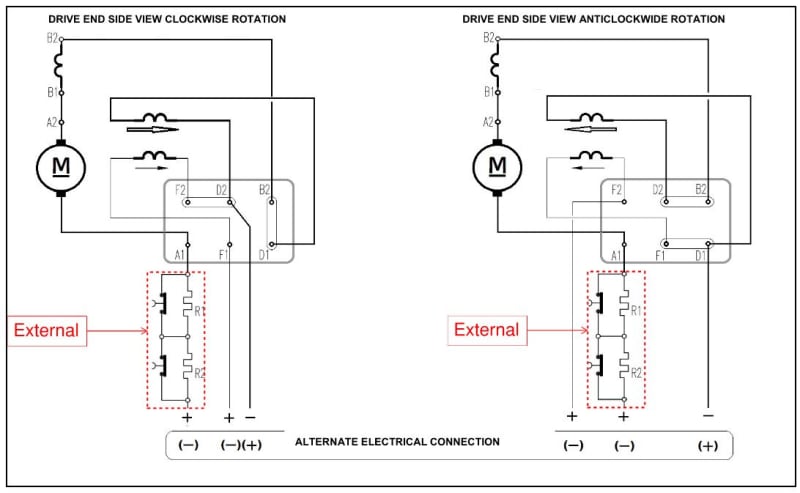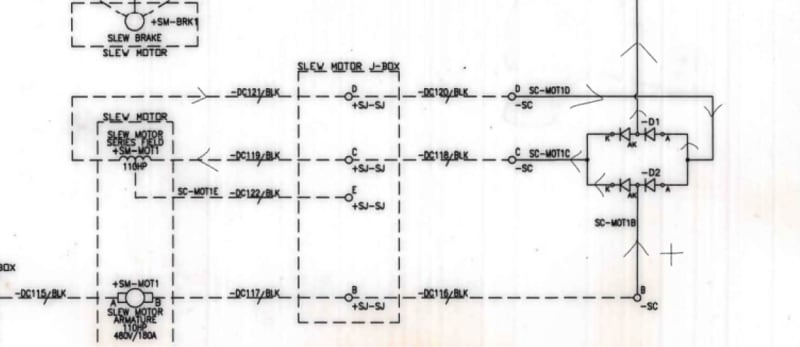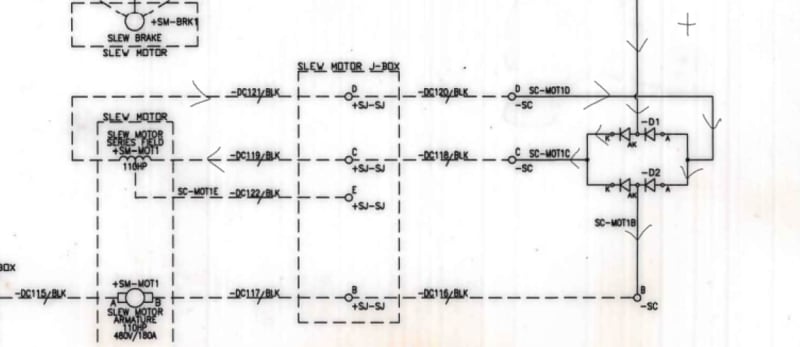panter Please re-read the whole thread.
We have an armature winding (the big "M" on the original diagram) connected between A1 and A2.
We have an interpole and/or a poleface winding (the inductor looking thingy in the upper left) connected between B1 and B2.
We have the main shunt field winding (the inductor thingy connected between F1 and F2).
We have the series filed winding (the inductor thingy connected between D1 and D2).
For correct operation, the current has to flow through each winding from terminal 1 to terminal 2. This means the series field ADDS to the main field, hence the term "cumulative". The "compound" terminology just means there is a series field present.
The reason the connection is shown with F1 and A1 as separate inputs is because it is not uncommon for these to be supplied at significantly different voltages (armature voltage is typically 2x-5x the field voltage) and current variation in each winding is governed by different things: by mechanical load, in the case of armature and by speed in the case of field.
Bottom line - you CANNOT leave F1-F2 unconnected as the machine will experience catastrophic overspeed.
Converting energy to motion for more than half a century




